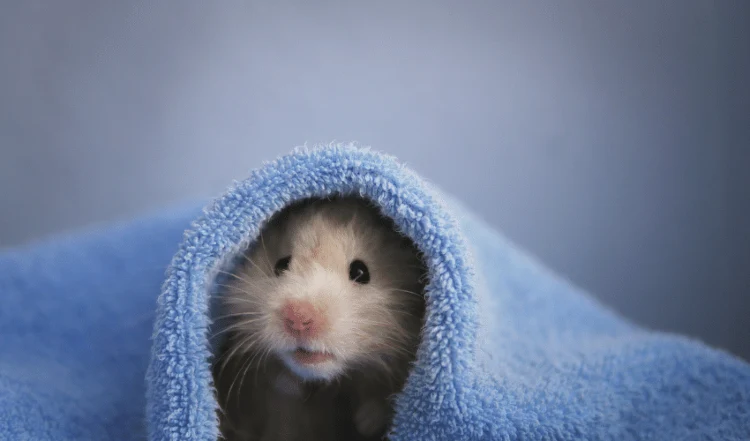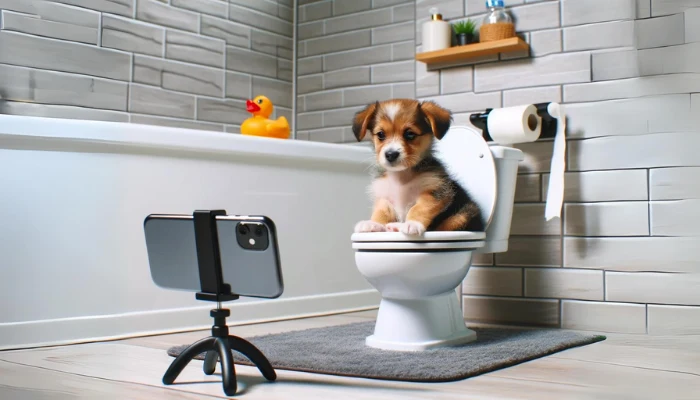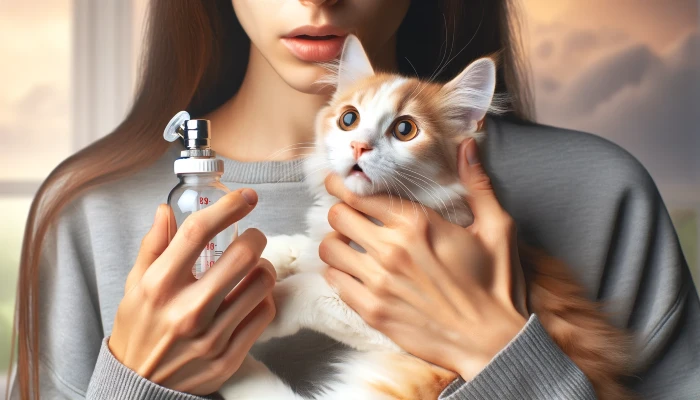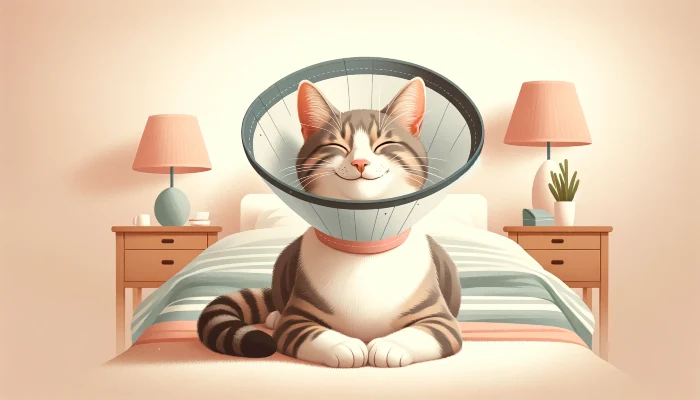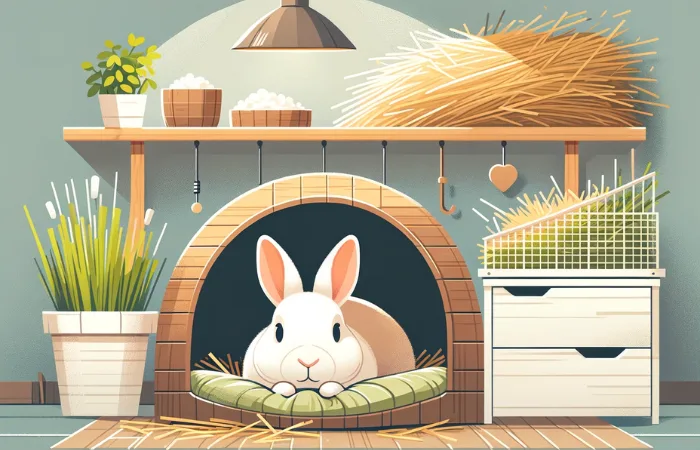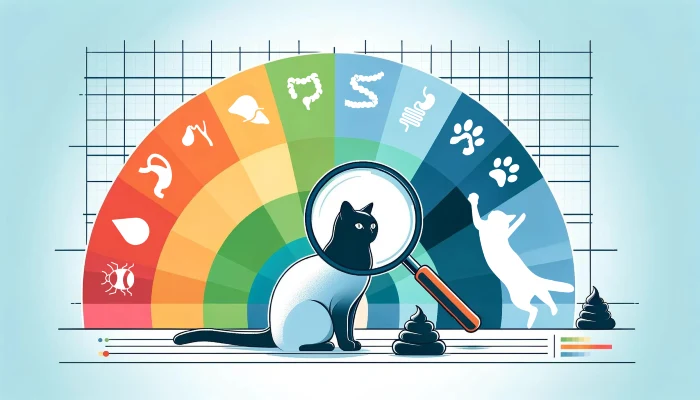Hamsters have been a popular beginner pet for many, many years, and still remain popular today.
Hamsters are small, easy to care for, friendly, quiet and adorable little critters. The most common hamster available is the Golden Hamster also known as Syrian Hamsters.
Golden hamsters come in short haired and long haired varieties as well as, several colors (golden, cream, black, albino and beige) and patterns.
The average lifespan of a hamster is 2 years, but don’t let that detract you from enjoying one.
Before you assume you need to buy a pair, think again, as hamsters prefer to live alone and don’t suffer from loneliness. They’re solitary creatures and will fight with any other hamster introduced into their cage. So no need to feel bad that your hamster is alone, he likes it that way.
Your hamster is nocturnal by nature, but will enjoy being held and being able to exercise during the day as well. Use this guide to help you set up and care for your new Hamster to help him live a healthy, happy life.
Let’s go over the most important aspects of hamster care.
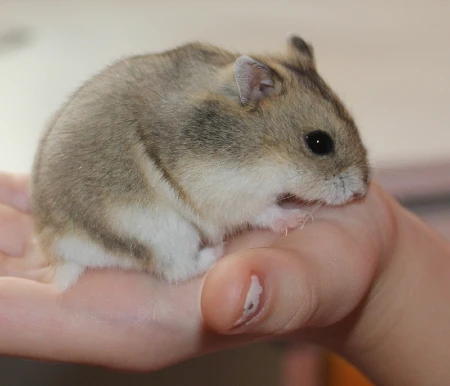
Dwarf Hamster
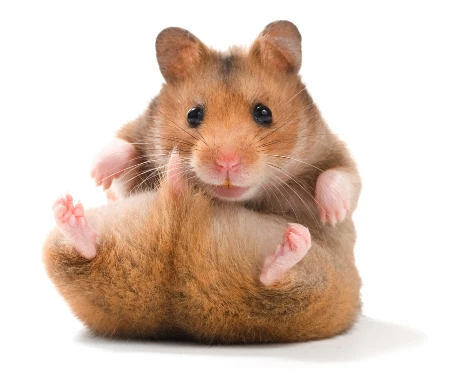
Syrian or Golden Hamster
Your Hamster Cage
There are a few different types of cages to choose from for your hamster, but I’m only going to cover two options. I’m selecting the two most common and easiest to clean. You’ll thank me later!
The first is a simple 10-gallon aquarium with a wire mesh screen top or a wire cage with a plastic bottom.
Either one is perfectly fine as your hamsters home, so pick the type that works best for you.
If you select the wire cage, and it has a wire grate floor, you’ll want to remove that grate. That will cause injury to your hamsters feet, and you don’t need it anyway.
The cage should be kept in a quiet room and out of drafts, direct sunlight and out of reach of other pets.
It’s very important to make sure that the screen top fits securely and the door on a wire cage is secure. Hamsters are actually excellent at escaping.
Your hamster would enjoy having a hide box to sleep in. You can purchase a hide box or make one yourself out of an empty tissue box (no lotion), small cardboard box or flower pot turned on its side. The hide boxes made of cardboard will need to be replaced regularly as they will become soiled over time.
Give your hamster some torn pieces of tissue (again, no lotion), toilet paper or paper towel to use as nesting material.
You’ll absolutely need to get a wheel for your hamster to exercise on.
If you’re worried about the incessant squeaking at night, don’t be. Just apply a small amount of vegetable oil on the places where the wheel attaches to the stand, and no more noise.
Bedding For Your Hamster
The best bedding for your Hamster is a recycled newspaper bedding such as Carefresh. This type of bedding is safe, absorbent and comfortable.
Don’t use pine or cedar bedding as these can and often do cause nasal irritation, breathing problems and eye injuries.
Feeding Your Hamster
Hamsters should be fed a high quality food, either a seed blend (Muesli type) or a pelleted hamster food.
A pelleted diet has some benefits; they’re nutritionally complete, less wasteful, and prevents your hamster from picking out the seeds it likes and leaving the rest.
If you do choose a seed blend, be sure to get a fortified diet with some added grains and dried vegetables as well as seeds. You can also find some seed blends that contain pellets in them, or you can get both a seed blend and a pelleted diet and mix them at a 1:1 ratio.
Hamsters also require fresh vegetables and limited amounts of fruit daily. The fresh foods should be cut into or shredded into pieces that your hamster can handle easily. Remove any uneaten fresh food after a few hours to prevent spoilage.
A list of safe and unsafe foods for your hamster is provided below.
Your hamster should have fresh water available at all times, and the water bottle must be changed daily.
If you’re interested in healthy treats for your hamster, check out our article on 5 Healthy Homemade Treats For Your Pet Rodent (Recipes Included).

Teddy Bear Syrian Hamster
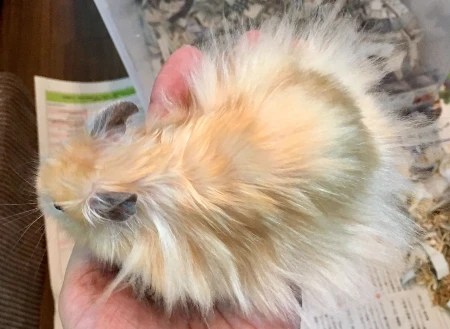
Long-Haired Syrian Hamster
Keeping That Cage Clean
You should clean your hamster’s cage thoroughly each week. If you have a hamster ball (wash after each use), let your hamster have his exercise time in that or place him in a secure box or carrier while cleaning.
To properly clean, remove all bedding, food dish, wheel, hide box and any toys. Wash everything, cage included, with pet safe soap, rinse well and dry completely.
Reassemble your pet’s home and show it off to him/her just in time for a nap.
Hamster Health 101
It’s important to watch your hamster for any signs of illness. If you see any signs, contact a veterinarian that has experience in treating rodents as soon as possible.
Depending on the issue, they may be able to give you some treatment ideas to do at home, or may want to see the hamster for an exam.
Signs of Illness in Hamsters
-
- Changes in eating and drinking habits
- Inactivity
- Coat is ruffled or messy
- Sneezing or wheezing
- Discharge from eyes or nose
- Diarrhea
- Wetness around the tail (known as wet tail)
- Bald patches
- Lumps or growths on the skin
- Overgrown teeth
Handling Your Hamster
Unless you were able to get your hamster from a private owner or breeder who has handled their hamsters from the beginning, you will be buying one from a pet store.
These hamsters have likely never been handled and will be scared when you first bring him home.
It’s best that you give your new hamster at least 2–3 days to get used to his new home before trying to pick him up and handle him. After he has had a few days to settle in, you can start working on handling him.
It’s important to be patient and not rush or grab him and pick him up anyway. You’ll destroy any trust your hamster will ever have in you. And that’s not how you want to start a relationship with your new pet!
Take it slow and let him get used to you.
When you first open the cage, be sure to talk to him and make sure he is awake before putting your hand near him, a scared or frightened hamster can and will bite.
When he is awake, put your hand down in the cage and let him smell and explore it on his terms, don’t try to pick him up yet, just let him explore your hand and see that you are not trying to hurt him.
Do that for at least a few days, and he will start climbing on your hand, and that is when you can try putting both hands in and let him walk back and forth between them.
Once he is comfortable and readily getting onto your hands, you can start lifting your hands up and let him walk from hand to hand, be sure that you do this over the cage in case he gets scared and jumps out of your hands.
When both of you feel comfortable with each other, place the cage on the floor and make sure you are in a room that is secure in case he ever jumps out of your hands.
Placing a rolled up towel across the bottom of the closed door will keep him from being able to get under the door.
The longer you handle your hamster, the easier it will be, and you will be able to safely hold him for long periods. Just always supervise your hamster, they are small and fast and can get lost very quickly.
Keeping Your Hamster Entertained
Other than a hide box and hamster wheel, your hamster will enjoy other things to play with and chew up.
There are several hamster toys in the pet stores you can buy for your hamster such as rodent safe wood chews, tunnels, hamster exercise balls and tubes.
Truth be told, you can make hamster toys out of things you already have at home using paper towel/toilet paper rolls, empty oatmeal boxes, tissue boxes, cardboard boxes and new PVC pipes.
You can create a playground for your hamster to enjoy using a large cardboard box that is high enough he can’t climb out. Add a light layer of bedding and place some toilet paper/paper towel rolls, PVC pipe and smaller boxes with openings cut in them for your hamster to explore and chew up.
Always supervise your hamster.
You can use a large, clear storage container as well, if you want a more secure playground, as an added security measure you can cut the middle section of the containers’ lid out and glue a piece of black window screening in place as a secure top with ventilation for the playground.
Just have fun creating a fun zone for your hamster.
Be sure to remove any soiled paper items after playtime and change bedding at least weekly and replace the big box when soiled. If you are using a plastic storage container, be sure to thoroughly wash that weekly as well.
Hamsters are a fun little pet and with the help of this guide you can provide your hamster with a happy and healthy life.
Supplies You Will Need for Your New Hamster
-
-
- Cage (either a 10 gallon aquarium with mesh screen top or wire cage with a plastic bottom)
- Water bottle and hanger
- 2 Food dishes (heavy is better to avoid tipping)
- Bedding (Carefresh or similar type)
- High quality fortified Hamster food (seed blend or pellets)
- Exercise Wheel (metal wheels are best)
- Hide box (you can use a tissue box, small cardboard box or flower pot)
- Hamster exercise ball (optional)
- Toilet paper, paper towels or tissues (no lotion) for nesting material
-
Safe and Unsafe Foods for Your Hamster
SAFE FOODS
-
-
- Broccoli
- Cauliflower
- Carrots and carrot tops
- Celery
- Bok Choy
- Lettuce (no Iceberg)
- Sweet potatoes (no skin)
- Dark leafy greens
- Cucumber
- Zucchini
- Yellow squash
- Peas
- Lentils (cooked)
- Cooked dry beans (no canned)
- Pumpkin
- Squash
-
-
-
- Berries
- Apples (no seeds or skins)
- Grapes
- Cherries (no pits)
- Apricot (no pit)
- Cantaloupe
- Mango
- Raisins
- Whole grain cereals (no sugar)
- Whole grain pasta (cooked)
- Whole grain bread
- Nuts (unsalted, no almonds)
- Plain air popped popcorn
- Hard-boiled eggs
- Timothy hay
-
UNSAFE FOODS
-
-
- Apple seeds and skins
- Fruit pits and seeds
- Almonds
- Garlic
- Onions
- Eggplant
- Tomatoes
-
-
-
- Chocolate
- Caffeinated beverages
- Dry beans
- Citrus fruits
- Rhubarb
- Sugary, salty or fatty foods
-
Safe Foods
-
-
- Broccoli
- Cauliflower
- Carrots and carrot tops
- Celery
- Bok Choy
- Lettuce (no Iceberg)
- Sweet potatoes (no skin)
- Dark leafy greens
- Cucumber
- Zucchini
- Yellow squash
- Peas
- Lentils(cooked)
- Cooked dry beans (no canned)
- Pumpkin
- Squash
- Berries
- Apples (no seeds or skins)
- Grapes
- Cherries (no pits)
- Apricot (no pit)
- Cantaloupe
- Mango
- Raisins
- Whole grain cereals (no sugary cereals)
- Whole grain pasta (cooked)
- Whole grain bread
- Nuts (unsalted, no almonds)
- Plain air popped popcorn
- Hard-boiled eggs
- Timothy hay
-
Unsafe Foods
-
-
- Apple seeds and skins
- Fruit pits and seeds
- Almonds
- Garlic
- Onions
- Eggplant
- Tomatoes
- Chocolate
- Caffeinated beverages (coffee and tea)
- Dry beans
- Citrus fruits
- Rhubarb
- Sugary, salty or fatty foods
-
Hamster FAQ
Do male or female hamsters make better pets?
Male hamsters, when handled from an early age, will make better pets due to their calmer and easier to handle nature. Females tend to be more aggressive.
More To Discover
- Pet Health Issues You Shouldn’t Ignore: Prevention is Better (and Cheaper) Than a Cure
- Cat First Aid: Essential Tips and Techniques Every Cat Owner Should Know
- 10 Common Puppy House Training Mistakes and How to Avoid Them
- A Comprehensive Guide to Doggy Daycare: Choosing the Right Care for Your Best Buddy
What should I do if my hamsters teeth grow too long?
It’s important that you take your hamster to a vet to have the teeth trimmed, never attempt to do it yourself, unless you get detailed instructions from a vet on how to do it properly.
Should I breed my female hamster?
To be honest, no, because hamsters are solitary and when breeding you have to put them together at just the right time (females are only receptive to breeding for a short time every 4 days) because female hamsters will fight and often injure or kill a male if she is not ready to breed. So, breeding hamsters is best left to professionals.








